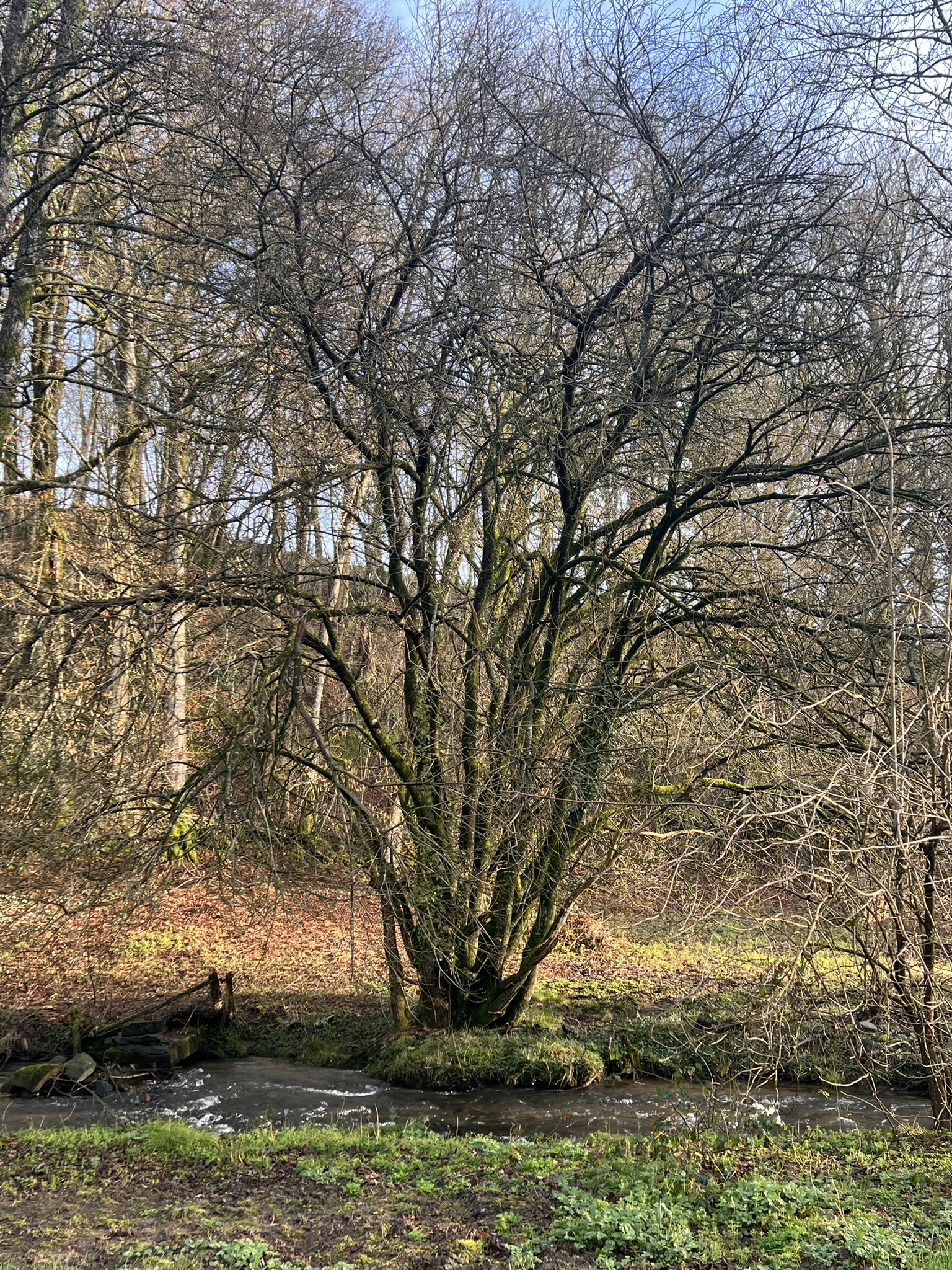Ah willow – To me she has always been a special tree. As a kid I read often of the weeping willow in fairy stories and I remember falling in love with the fluffy rabbit slippers on the pussy willow. A wonderful song by Jethro Tull named Pussy Willow (although I’m not entirely sure it’s about the tree!) – down at the bottom of the page there.
And here, in our home we have SO MANY willow trees. They pop up everywhere, so much so that I have to transplant some away from areas they aren’t so helpful. I do try to keep them alive and pot them and maybe I can plant them in the meadow later or even give them away to others. There are hundreds of species of Willow and we have several here, including the Crack willow, Bay willow, Pussy Willow (Goat Willow), and a few I’ve yet to accurately identify.


 The most prominent of our Willows is an old lady Goat Willow who stands by the river in view of the Alder Grove and acting as a guardian of the river between the grove and the meadow. I am yet to learn her name but she very much brings images of an old crone of the river. She’s really very beautiful with moss covering many of her branches. At her base we discovered wire cutting into her and we’re doing our best to remedy that without causing additional damage removing what has already become part of her.
The most prominent of our Willows is an old lady Goat Willow who stands by the river in view of the Alder Grove and acting as a guardian of the river between the grove and the meadow. I am yet to learn her name but she very much brings images of an old crone of the river. She’s really very beautiful with moss covering many of her branches. At her base we discovered wire cutting into her and we’re doing our best to remedy that without causing additional damage removing what has already become part of her.
According to some, following star lore, the days of Willow start of 23rd Feb until 11th March (although she shows up in April according to others).
Willow relates to Monday, the activity of bees and is often used as a honey Tree. The birds associated with Saille are the Hawk and the Thrush, the animals are the Hare and the Cat. Herbs most commonly associated are Moonwort, Primrose and Mistletoe. She is one of the Seven Sacred Irish Trees and is also a sacred Druid Tree. (Source)
Medicinal Uses
Willow bark is used to ease pain and reduce inflammation for many centuries. Researchers believe that the chemical salicin, found in willow bark, is responsible for these effects. However, studies show several other components of willow bark, including plant chemicals called polyphenols and flavonoids, have antioxidant, fever-reducing, antiseptic, and immune-boosting properties. Some studies show willow is as effective as aspirin for reducing pain and inflammation (but not fever), and at a much lower dose. Scientists think that may be due to other compounds in the herb. The different species of Willow appear to have differing levels of Salicin and bark from white, purple, and crack willows is most commonly used. (Source)
You can make a tea from the Willow bark to consume. Those who have adverse reactions to Aspirin should obviously avoid using Willow.
The leaves are known as being useful for skin conditions and can be applied as a tea or a balm/location.
Willow Bracket Fungus
This fungus grows only on the Willow and also has medicinal benefits. Willow Bracket contains polysaccharides, especially βglucan, steroids, flavonoids, coumarins, styrylpyrones, macrolides, and sesquiterpenes. It is the most common source of hispidin, a secondary metabolite investigated in research devoted to cancer, metabolic syndrome, cardiovascular, neurodegenerative, and viral diseases.
Willow Bracket may be beneficial for cancer, multiple sclerosis, heart attack, stroke, injury recovery, liver damage, and diabetes. (Source)
